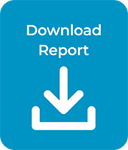Shadow Board is divided over whether the Reserve Bank should ease the OCR in August
New Zealand Institute of Economic Research (Inc)
Media Release, 10 am Monday, 12 August 2024
For immediate release
Shadow Board is divided over whether the Reserve Bank should ease the OCR in August
The NZIER Shadow Board is divided over whether the Reserve Bank of New Zealand (RBNZ) should decrease the Official Cash Rate (OCR) in the upcoming August Monetary Policy Statement. Over half of the Shadow Board members viewed that a 25 basis-point decrease in the OCR is needed now, given the continued slowing in the New Zealand economy and the labour market, and annual CPI inflation is nearing the 1 to 3 percent inflation target band. The rest of the members recommended the Reserve Bank keep the OCR at 5.50 percent. One member considered that there is still not enough evidence from the economic data indicators to justify a cut in the OCR now.
Regarding where the OCR should be in a year’s time, the Shadow Board’s view was an easing in the OCR, with the majority picking an OCR ranging between 4 percent and 5 percent. There was an overwhelming consensus that an easing cycle in the OCR should commence soon. Several members viewed that the RBNZ should take a forward-looking approach to the weakening economic conditions and ease the OCR in the next meeting, if not in August. However, one member recommended the RBNZ wait for forthcoming data on GDP and price indices to inform its OCR decisions.


Table 1 Participant comments
Participants’ comments are optional
| Stephen Toplis | The economy is in distress. The labour market is softening rapidly and will soften much more. Inflation is settling within the RBNZ’s target band. This demands an immediate response from the central bank to prevent an overshoot on the downside. |
| Viv Hall | Still not enough evidence, including from high-frequency indicators, to justify an immediate cut in the OCR, but a cut is getting closer. Forthcoming data releases for selected Price Indices, September quarter CPI’s components, and June quarter GDP, together with an assessment of impacts from the tax cuts from 31 July, will provide crucial evidence for what the OCR should be in 12 months. |
| Kirk Hope | Despite non-tradeables inflation still being high, a lot of the non-tradeable drivers, e.g. local government rates and insurance cost increases, are things that the RBNZ can’t really control. Business (and consumer) sentiment is down, as reflected in numerous data releases – including our own PMI and PSI. So, a cut is justified in my view at this stage. |
| Jarrod Kerr | Going into next week’s decision, I would recommend the RBNZ board cut 25bps to 5.25%. Moving with market expectations will, with the right language, support the fall in wholesale interest rates. The RBNZ’s cut would cement market pricing and allow banks to pass on lower rates to customers. The economy needs support now. |
| Arthur Grimes | The RBNZ’s decision should be based on the longer-term considerations of the New Zealand economy. |
| Kelly Eckhold | The weaker economy and inflation moving into the 1–3 percent range open the chance to reduce restrictions soon. Scope for 100–125 bp of cuts in the next year seems there, although the extent of cuts beyond that will depend on how quickly still sticky core inflation falls and how the economy responds to interest rate cuts. Watch the exchange rate as it might fall. |
| Dennis Wesselbaum | Non-tradable inflation and inflation expectations are still too high (though expectations tend to lag CPI inflation), but the current macroeconomic trend is more worrying. If the RBNZ was forward-looking, which they should be, they should start cutting the OCR now or in the next meeting. |
| Kerry Gupwell | While I do not foresee a change in the OCR this round, the pain of the economic conditions is being felt across multiple sectors, and the “R” word is now commonly used. We must be close to the tipping point, and my concern is that the Reserve Bank (and the government) overshoot the mark. For some time now, businesses have been trying to survive and maintain their workforce for an uplift in conditions. However, that has not happened, nor does it look likely until 2025. This is now forcing more and more to implement restructures – job losses. |
| Brooke Roberts | Central banks are really in the spotlight this month. Powell from the Fed gave a view of holding for longer than expected, Japan’s central bank increasing rates, Australia recently decided to stay on hold and now to us. Economic indicators continue to strongly suggest it is time for easing through reducing the OCR. If it’s not this month, we do see signs that it should be in the near future. |
About the NZIER Monetary Policy Shadow Board
NZIER’s Monetary Policy Shadow Board is independent of the Reserve Bank of New Zealand. Individuals’ views are their own, not those of their respective organisations. The next Shadow Board release will be Monday, 7 October 2024, ahead of the RBNZ’s Monetary Policy Review. Past releases are available from the NZIER website: www.nzier.org.nz.
Shadow Board participants put a percentage preference on each policy action. Combined, the average of these preferences forms a Shadow Board view ahead of each monetary policy decision.
The NZIER Monetary Policy Shadow Board aims to:
• encourage informed debate on each interest rate decision
• help inform how a Board structure might operate
• explore how Board members could use probabilities to express uncertainty.
For further information, please contact:
Ting Huang, Senior Economist
ting.huang@nzier.org.nz, 027 266 0969
Share this
Related publications

Shadow Board is divided over whether the Reserve Bank should increase the OCR in May

Shadow Board recommends the Reserve Bank should keep the OCR on hold in February

